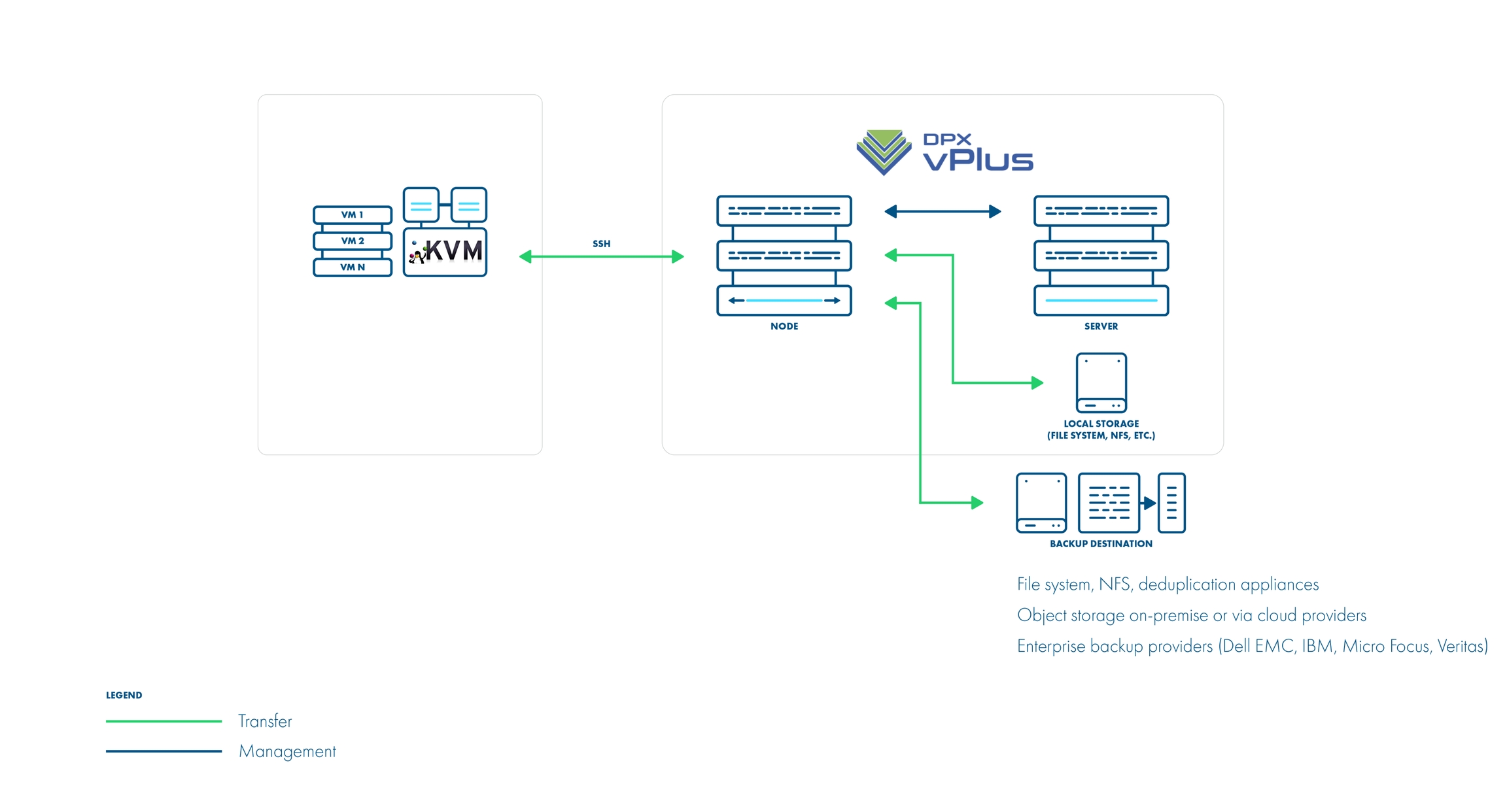KVM/Xen
vPlus access KVM/Xen (stand-alone libvirt) hosts over SSH. The vPlus Node can be installed outside the environment.

Backup Process
direct access to the hypervisor over SSH
crash-consistent snapshot taken directly using virsh (QCOW2/RAW file), lvcreate (LVM), rbd snapshot for Ceph (separate call for each storage backend) For QCOW2/RAW file, virsh snapshot-create-as is used when VM is running - otherwise, qemu-img create is used
optional application consistency using pre- / post-snapshot command execution
QCOW2/RAW-file/LVM data exported over SSH (optionally with netcat)
Ceph RBD data exported using rbd export or RBD-NBD when incremental is used If last stored snapshot is not missing, snapshot diffs are downloaded using rbd diff, then changes are written to inc file and diff file. If it is missing, export is treated as full, and then rbd export is used.
libvirt XML metadata saved • last snapshot kept on the hypervisor for the next incremental backup (if at least one schedule assigned to the VM has backup type set to incremental)
restore recreates files/volumes according to their backend (same transfer mechanism as used in backup) and then defines VM on the hypervisor
KVM/Xen (libvirt) environments require having the correct entry in known_hosts on the node:
it must be
known_hostsa file that belongs tovprotectuserthe algorithm must be set to
ssh-rsamake sure to have in your Node Configuration
known_hostsfile-path set to the location that is accessible forvprotectuser - default/opt/vprotect/.ssh/known_hostsif your user/group used on the KVM host is other than
qemu:qemuthen provide them in hypervisor details form when you add/update the hypervisor
KVM - VG scanning
Used with LVM-based VMs only. In order to allow VG scanning, make sure to have your LVM packages up to date on the hypervisor. LVM reporting was one of the features added in RHEL/CentOS 7.3 and is used by vPlus to collect information about VGs.
KVM - full libvirt installation
CentOS-based KVM hypervisors may not have full libvirt available, specifically libvirt's blockcommit operation. If you need to change libvirt to the full version, make sure to follow the steps in this section: Full versions of libvirt/qemu packages installation.
Public key authentication
If you prefer to authenticate by using public keys instead of a password, follow the steps described in SSH public key authentication section.
Limitations
incremental backup is unavailable for LVM disks